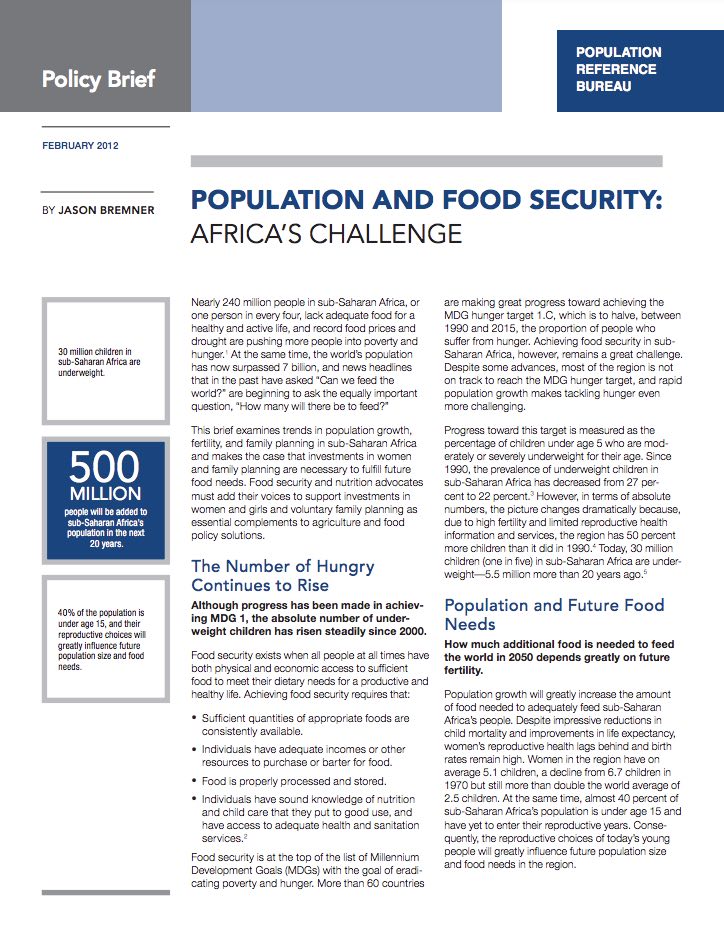Environmental Change, Migration, and Gender
(2012) Men and women experience migration differently. The pressures to migrate, destination choices, employment prospects, and implications for social relations back home all vary by gender.
(2012) Men and women experience migration differently. The pressures to migrate, destination choices, employment prospects, and implications for social relations back home all vary by gender.

(2012) Almost two of every three people in sub-Saharan Africa live in a rural area, relying principally on small-scale agriculture for their livelihood. Improving agriculture on small farms is critical to reducing hunger.

(2012) Almost two of every three people in sub-Saharan Africa live in a rural area, relying principally on small-scale agriculture for their livelihood. Improving agriculture on small farms is critical to reducing hunger.
(2012) Of the 48 least developed countries in the world, 33 are located in sub-Saharan Africa. At the same time, this region stands out with the highest birth rates in the world.

Kenya is experiencing a growing epidemic of noncommunicable diseases (NCDs). A window of opportunity exists to address the four key NCD risk behaviors ( tobacco use, alcohol use, unhealthy diet, physical inactivity) in Kenya's large and growing youth population.
Project: IDEA: Informing Decisionmakers to Act
This ENGAGE presentation designed for improving access to health services (especially family planning and reproductive health), while also helping households improve livelihoods, manage natural resources, and conserve the critical ecosystems on which they depend.
(2006) Adolescent U.S. girls are being arrested in record numbers. And every year brings new media attention to mean or aggressive girls' behavior—with sensational newspaper headlines and book titles such as See Jane Hit: Why Girls Are Growing More Violent and What We Can Do About It and Sugar and Spice and No Longer Nice: How We Can Stop Girls' Violence.1 Could there be an epidemic of violence in the United States among girls—who have traditionally been considered more mature and less trouble to raise than boys?